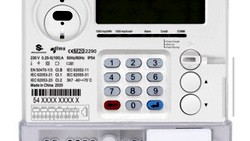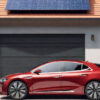The aerospace sector has long pushed the boundaries of engineering innovation out of necessity to conquer the skies. As utilities work to modernize aging grid infrastructure and scale clean energy deployment, many aerospace technologies can be adapted to transform power systems.
- Sensors and Instrumentation
Just like jet engines rely on thousands of sensors to monitor thrust, temperature, vibrations, and more, utilities are now installing intelligent devices on power lines, transformers, and solar arrays to provide hyper-local visibility into network functionality. For example, fiber optic distributed acoustic sensing uses laser vibrations in cables to "listen" for troubles across vast areas. - Communication Networks
NASA relies on ultra-reliable satellite networks to transmit terabytes of spacecraft data. Similarly, utilities can model proprietary wireless networks after these systems to enable real-time monitoring of remote grid assets like transmission lines and wind farms across vast rural territories previously unseen. Cutting-edge solutions like Starlink satellite network are now revolutionizing internet connectivity by providing access to hard-to-reach communities through high-altitude platform stations. - Data Analytics & Modeling
Aerodynamic simulations and terabytes of flight data fed machine learning at NASA, predicting component failures before they occurred. Utilities can apply similar techniques to automatically detect transformers at risk of overheating or pinpoint zoning for future power and charging station investments needed to support electric transportation adoption. - Testing and Standards
Just as wind tunnels, materials testing, and simulation helped certify new airplane materials and designs, utilities can "test drive" virtual microgrids under various emergency scenarios via modeling before costly physical deployment. This engineering approach aims to build resilience into system upgrades from the start. - Energy Storage and Propulsion
Aerospace technology has made significant advancements in energy storage and propulsion systems. These innovations can be leveraged in utility networks to develop efficient energy storage solutions and integrate them with renewable energy sources. This can help overcome the intermittent nature of renewables and ensure a stable and reliable power supply.
Takeaway
Adapting aerospace technologies to the complex demands of utility networks presents exciting opportunities for innovative problem-solving, especially in the integration of clean energy resources. By fostering collaboration between science and utility sectors, we can leverage advancements made in the skies to power progress in the smart grids revolution.
If you have any inquiries or need further information about our energy storage solutions, data acquisition, or any other services offered by CLOU, please do not hesitate to reach out to us. We are here to assist you and welcome your valuable thoughts and comments.
Until then, keep reaching for the stars and powering a brighter future!





All comments are moderated before being published. Inappropriate or off-topic comments may not be approved.